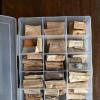
29-12-2025 10:15
Hulda Caroline HolteHello, I found and collected this propoloid ascom

29-12-2025 08:30
Hello.A tiny ascomycete sprouting under Juniperus

29-12-2025 09:38
Oskari VirtanenHi,could anyone help me identify this, I suspect P

28-12-2025 12:08
Margot en Geert VullingsThis possible Karstenia was found on the bark of d

21-12-2025 21:32
Pol DebaenstHello, Garden, Burgweg 19, Veurne, BelgiumOn 10/1

26-12-2025 21:19
Arnold BüschlenPithyella chalaudii Priou. Ist als Bryoparasit in

21-12-2025 09:32
Hello.A tiny ascomycete found embedded in wood in

18-12-2025 21:17
Pol DebaenstThe identification took me to Byssonectria deformi
Wood anatomy
Enrique Rubio,
13-03-2025 19:16
And by the way, could you advise me on how I could make thin, well flattened cross-sections?
Hans-Otto Baral,
13-03-2025 21:32

Re : Wood anatomy
This reminds me of Tilia. Ulmus is ring-pored, impossible.
Do you mean sections for the microscope? With a sharp razor blade under the bino. But the success depends on the degree of decomposition, and hard wood like oak makes the blade soon unsharp.
For macro it is difficult too but this here is excellent.
Enrique Rubio,
14-03-2025 11:31
Re : Wood anatomy
Thank you David and Zotto.
The page you indicate was already familiar to me, but I find it complicated to interpret.
There is a very interesting pyrenomycete on this branch and that is why we are particularly interested in knowing the host. My friend F.J. Balda, the collector, has sent me these other images to try to find out more about it and has told me that it could be Cornus. Do you think it is possible?
The page you indicate was already familiar to me, but I find it complicated to interpret.
There is a very interesting pyrenomycete on this branch and that is why we are particularly interested in knowing the host. My friend F.J. Balda, the collector, has sent me these other images to try to find out more about it and has told me that it could be Cornus. Do you think it is possible?
Hans-Otto Baral,
14-03-2025 12:31

Re : Wood anatomy
This cannot be the same tree as the first pic (pores not in radial rows)
Enrique Rubio,
14-03-2025 13:55
Re : Wood anatomy
I don't know, but the collector tells me they are from the same branches. Maybe my photos are of a too semi-rotten log. He also tells me that there is no Tilia there, but there are Cornus, Acer, Salix, Betula and some Fagus.
Yanick BOULANGER,
14-03-2025 14:42
Re : Wood anatomy
Bonjour
Au risque de dire une bêtise, les 2 premières photos sont des coupes tangentielles et le 2 dernières des coupes radiales.
L'analyse du bois est très compliquée et demande une pratique et du matériel particulier comme le microtome pour faire des coupes de 15 µm pour le microscope
Il y a aussi toute une préparation du bois pour le ramollir et pouvoir le trancher puis plusieurs bains successifs et des colorations
J'ai essayé de faire des coupes à main levé c'est toujours décevants
Le lien ci-dessous explique bien mais il est en Français
https://ultv.univ-lorraine.fr/mooc-anatomie-du-bois/semaine-3-anatomie-et-identification-a-lechelle-microscopique-du-bois/video/8096-realisation-et-coloration-de-coupes-minces-de-bois/
Yanick
Au risque de dire une bêtise, les 2 premières photos sont des coupes tangentielles et le 2 dernières des coupes radiales.
L'analyse du bois est très compliquée et demande une pratique et du matériel particulier comme le microtome pour faire des coupes de 15 µm pour le microscope
Il y a aussi toute une préparation du bois pour le ramollir et pouvoir le trancher puis plusieurs bains successifs et des colorations
J'ai essayé de faire des coupes à main levé c'est toujours décevants
Le lien ci-dessous explique bien mais il est en Français
https://ultv.univ-lorraine.fr/mooc-anatomie-du-bois/semaine-3-anatomie-et-identification-a-lechelle-microscopique-du-bois/video/8096-realisation-et-coloration-de-coupes-minces-de-bois/
Yanick
Hans-Otto Baral,
14-03-2025 14:44

Re : Wood anatomy
The second could perhaps be Cornus (the parenchym is too thick-walled for Salix), the first image perhaps Betula. The first one needs a radial section to look for ladder-like perforations.
Viktorie Halasu,
15-03-2025 17:01

Re : Wood anatomy
Hello Enrique,
if you have a UV pocket lamp, you can iluminated the section / mount from above. The _surface_ structure stands out, no matter how thick the section is. It's useful for old softened wood.
Viktorie
if you have a UV pocket lamp, you can iluminated the section / mount from above. The _surface_ structure stands out, no matter how thick the section is. It's useful for old softened wood.
Viktorie
David Malloch,
16-03-2025 15:21

Re : Wood anatomy
I keep a small collection of local wood samples that I can use when I need to confirm an identification. This has been really useful.
Like Zotto, I use a sharp razor blade and a binocular microscope to make the sections. As Zotto said, the blades get dull quickly. I like to use the double-edge blades broken into two halves. These are relatively inexpensive.
For identification I use the book Identifying Wood by R. Bruce Hoadley. It's focus is on North American wood, but the genera are mostly the same in Europe, so it should be good there as well.
Hans-Otto Baral,
16-03-2025 16:20

Re : Wood anatomy
This is a nice way indeed! I keep macro- and microphotos of wood anatomy in a folder, sorted after the families. However, this vast assemblage includes also many uncertain identifications.
David Malloch,
16-03-2025 16:30

Re : Wood anatomy
That is an impressive collection of wood photos! Thank you for sharing.
Enrique Rubio,
17-03-2025 20:08
Re : Wood anatomy
I would like to thank David, Zotto, Yannik and Viktorie for their help. This matter does not seem to be very simple, so we will have to try to make good sections of the wood and build a good database with known timbers, as you advised me.
Shane John,
17-04-2025 21:29
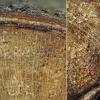
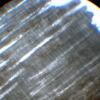
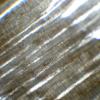

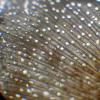
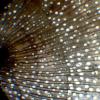
 cf Padus avium
cf Padus avium